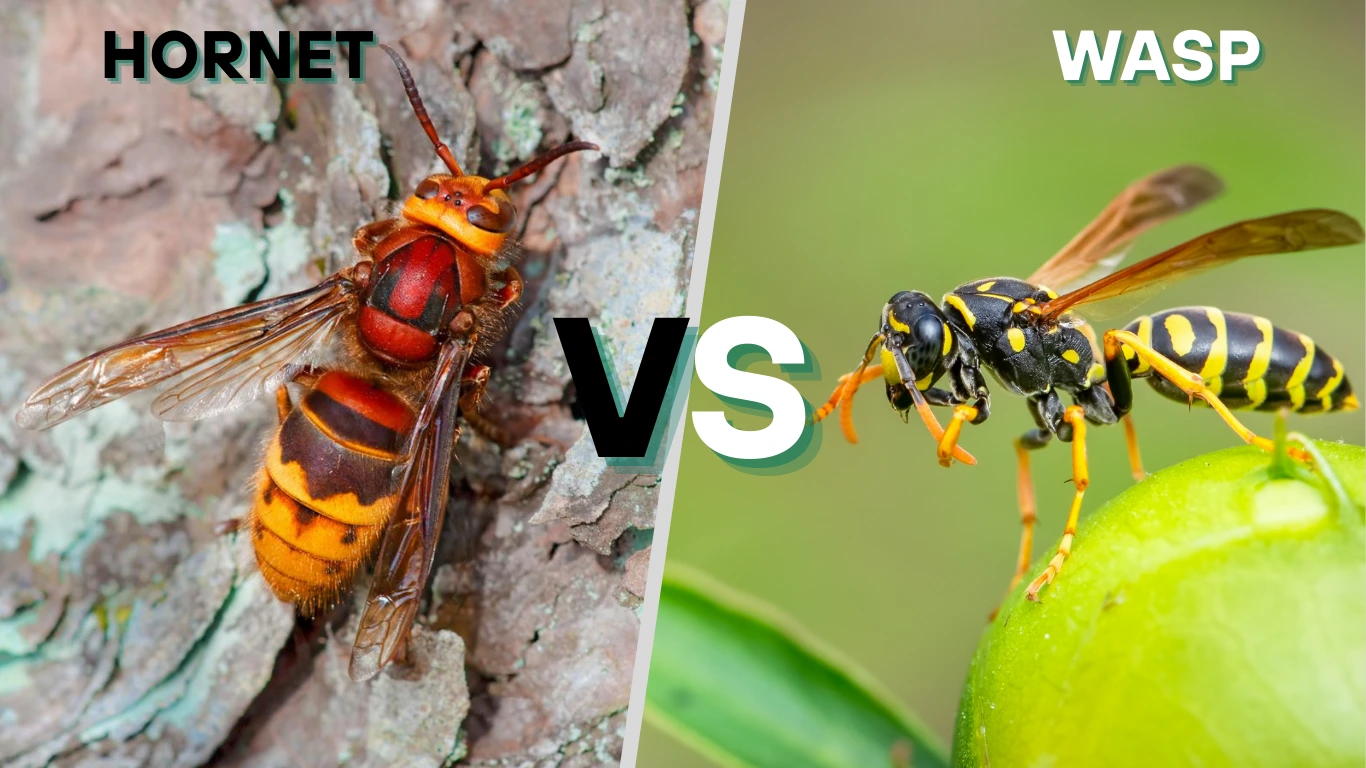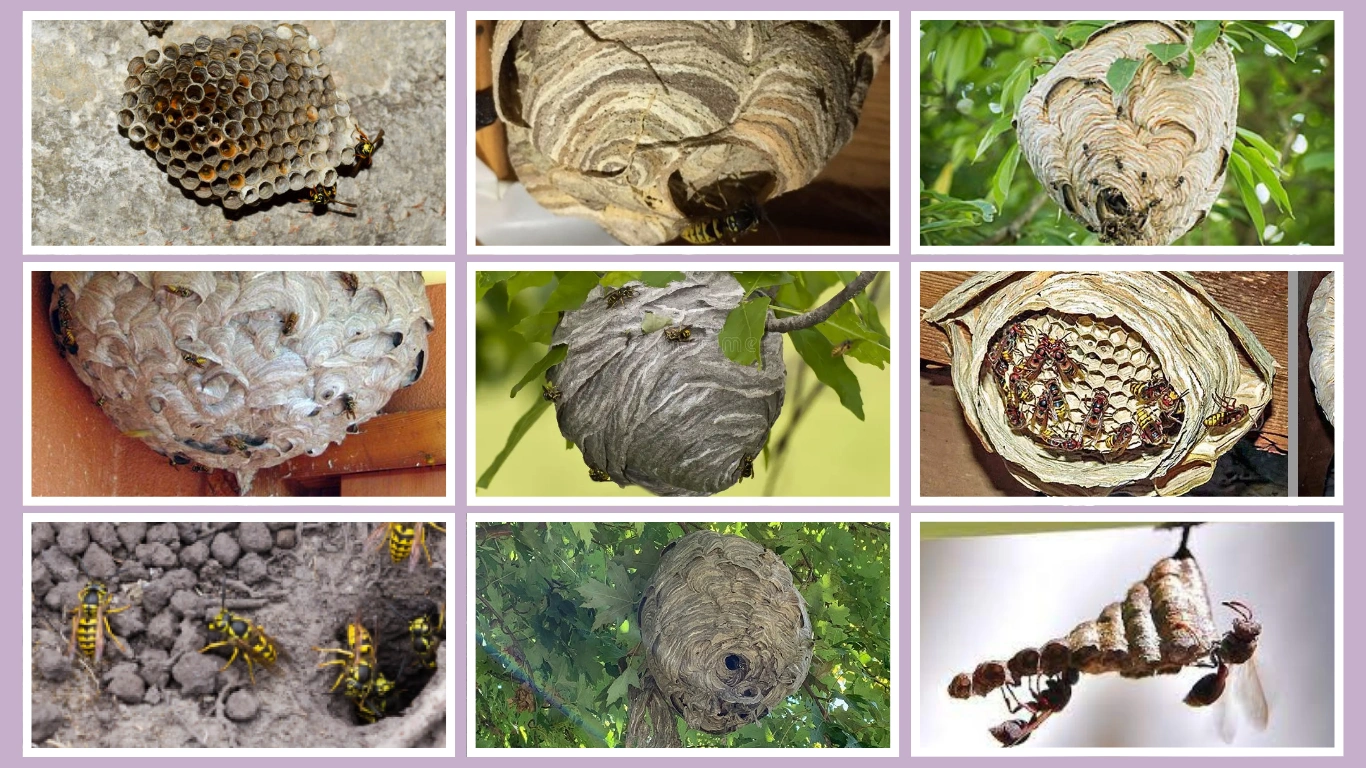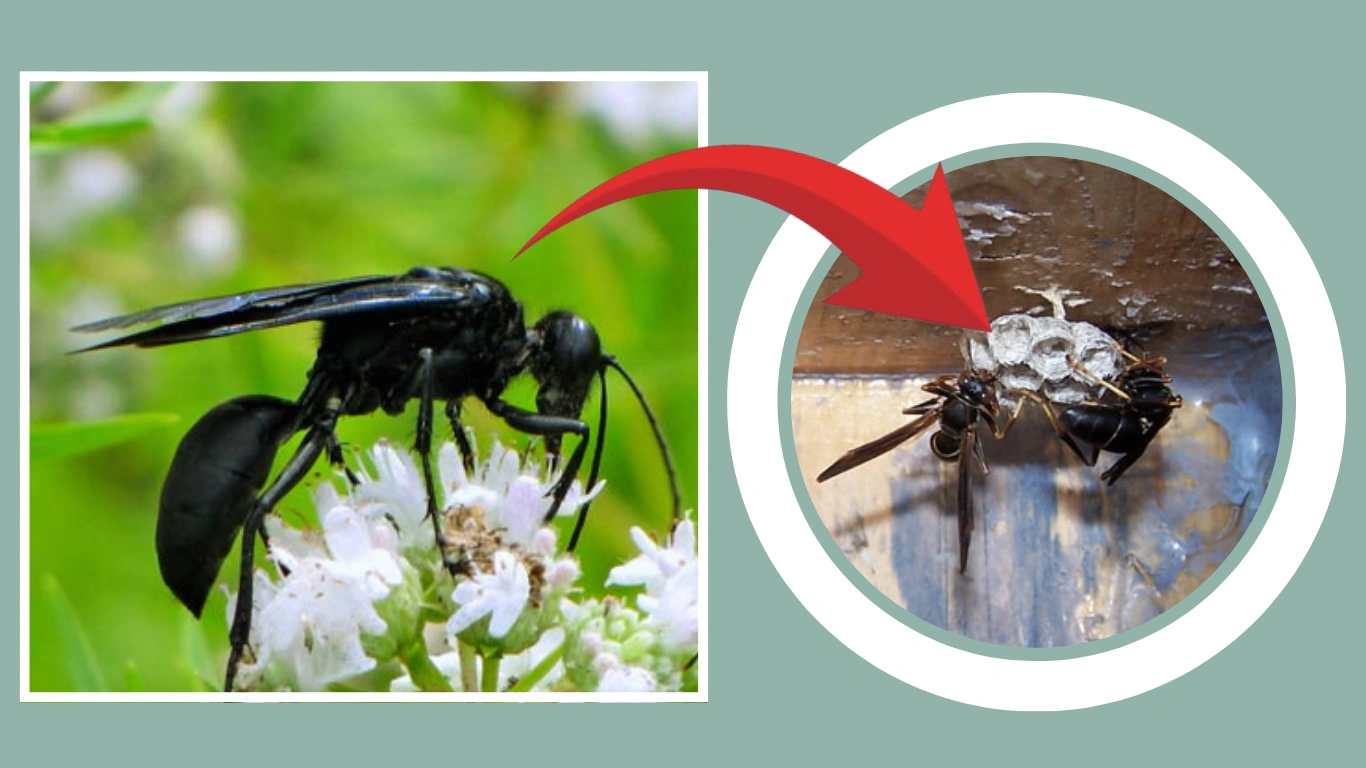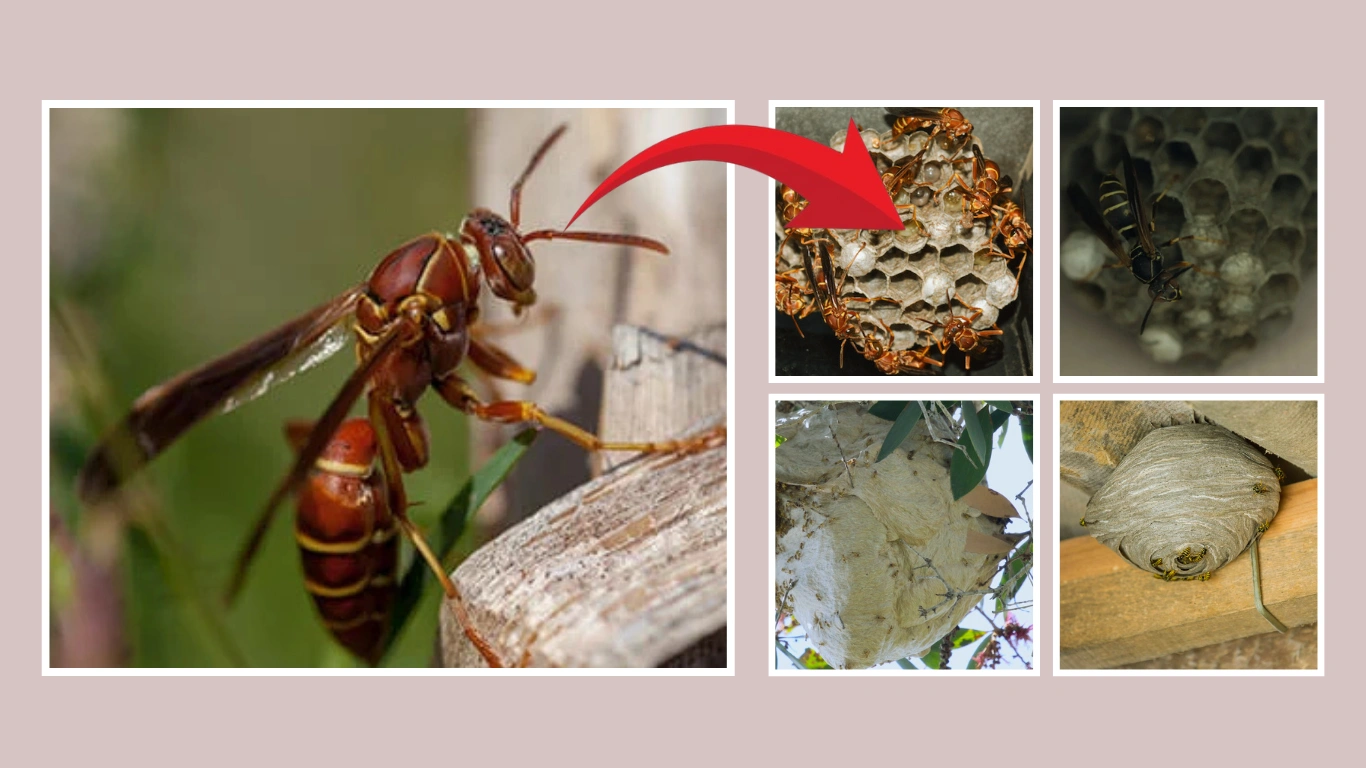Hornets and wasps are often mistaken for each other, but they’re not the same. From their nest structure to their sting power and even their size, these two buzzing insects have key differences. Whether you’re spotting them in your garden in the UK, watching them in Australia, or just curious about who would win in a face-off, this guide breaks it all down.
Let’s explore the hornet vs wasp battle from all angles—nest, sting, size, and strength.
Comparison table for Hornet vs Wasp:
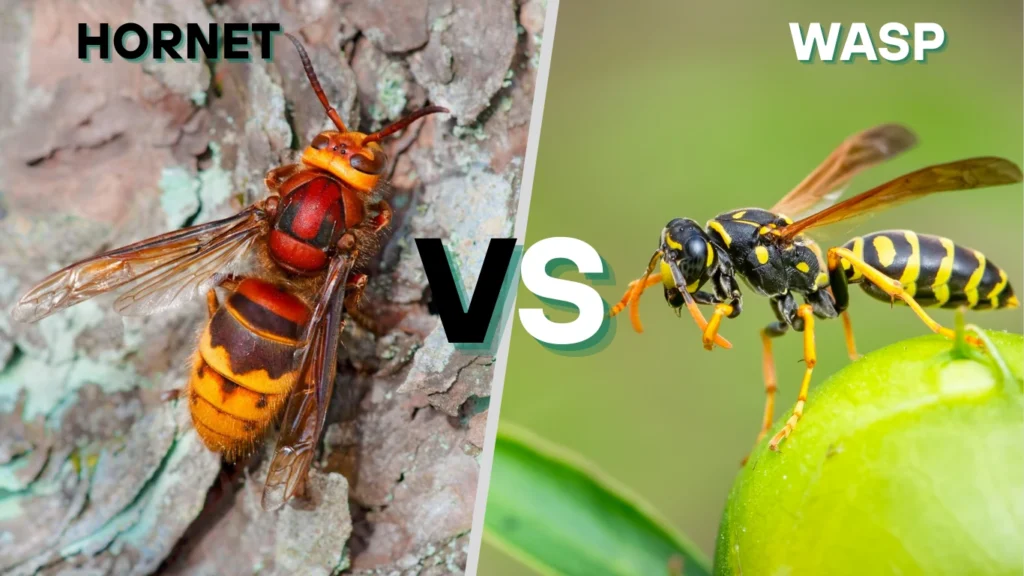
If you’re trying to quickly tell the difference between a hornet and a wasp, this table breaks down their key traits side by side. From size and color to nest style and sting strength, it highlights what makes each insect unique.
| Feature | Hornet | Wasp |
| Size | Larger (up to 2 inches) | Smaller (0.5 to 1 inch) |
| Body Shape | Thick and robust | Slender with narrow waist |
| Color | Brownish or reddish with yellow/white | Bright yellow and black |
| Nest Type | Enclosed, football-shaped nests | Open or enclosed nests, often smaller |
| Nest Location | Trees, attics, high places | Eaves, bushes, underground |
| Aggression Level | More aggressive when threatened | Varies; yellowjackets are highly aggressive |
| Sting Pain Level | Very painful, stronger venom | Painful but generally less than hornets |
| Sting Frequency | Can sting multiple times | Can sting multiple times |
| Social Behavior | Live in colonies, strong defense response | Also colony-based, but varies by species |
| Common Regions | Europe, Asia, North America | Worldwide |
Hornet vs Wasp Nest – How to Tell the Difference
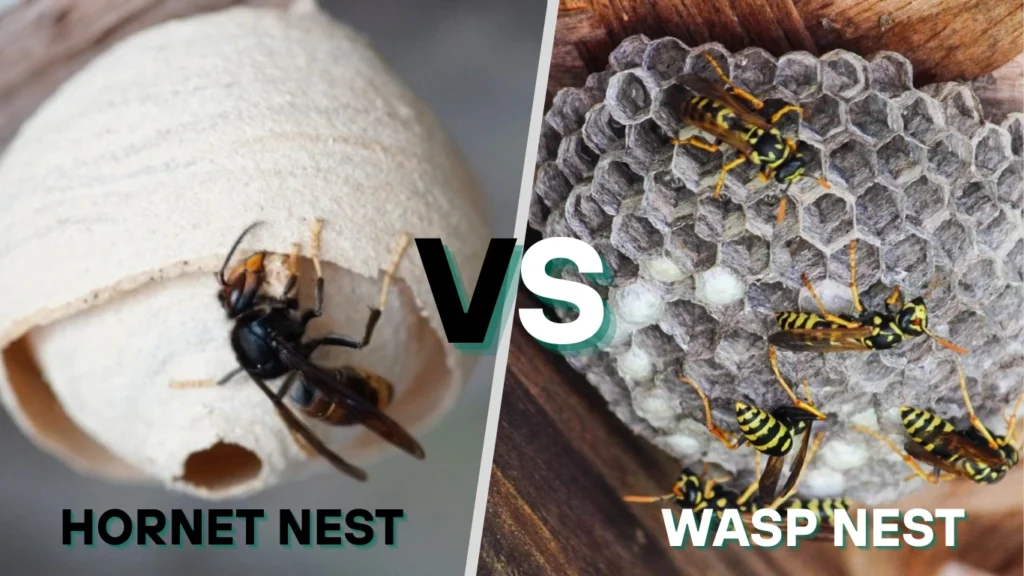
Hornets and wasps both build papery nests, but their structure, size, and location can help you identify which insect you’re dealing with. Understanding these differences is useful for safety, especially if you spot a nest near your home.
Hornet Nest Characteristics
Hornet nests are usually large, football-shaped, and made from chewed wood pulp. They’re often found in higher, sheltered spots like:
- Tree branches
- Roof overhangs
- Attics or sheds
- Under house eaves
European hornets and bald-faced hornets are common builders, and their nests can grow quite large if undisturbed.
Wasp Nest Appearance
Wasp nests vary depending on the species. Paper wasps build smaller, umbrella-shaped nests with exposed hexagonal cells, often attached to:
- Window frames
- Door corners
- Porch ceilings
Yellowjackets, another type of wasp, create larger, more enclosed nests—sometimes even underground or inside wall cavities.
These differences in structure and location are key to distinguishing a hornet vs wasp nest quickly and safely.
Hornet vs Wasp Sting – Pain, Venom, and Reaction
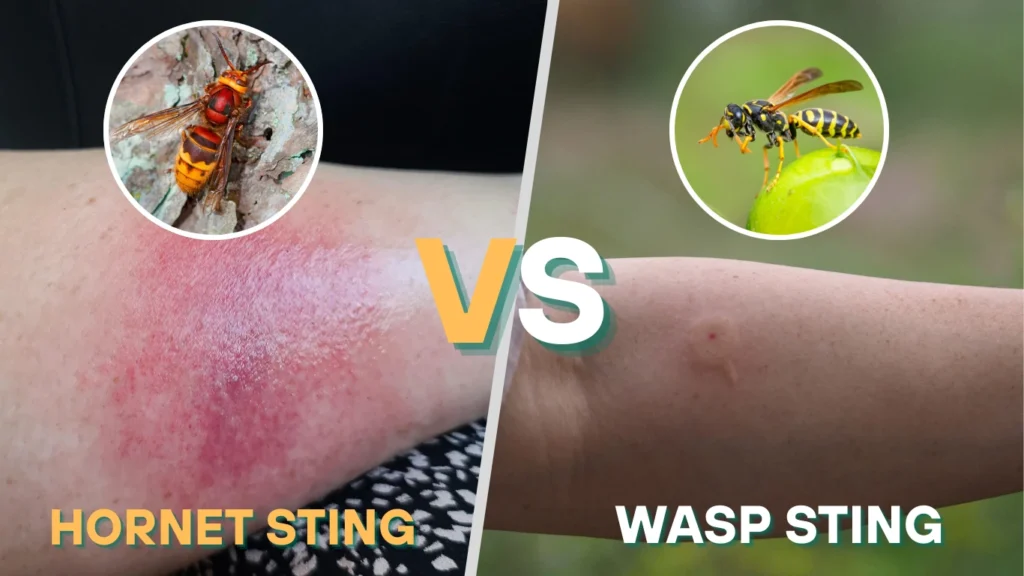
The sting is one of the most feared traits of both hornets and wasps. While they’re closely related, their sting differs in how painful it feels, how strong the venom is, and how aggressive they get.
Which Sting Hurts More?
Hornet stings are usually more painful than wasp stings. This is because hornets are larger and inject more venom. The sting of some species, like the Asian giant hornet, feels like burning and can last for several minutes. Wasp stings—especially from yellowjackets—are also painful, but often shorter in duration.
Venom Strength and Effects
Hornet venom causes intense swelling, redness, and burning. It also contains chemicals that alert nearby hornets to attack the same target. Wasp venom breaks down cells and triggers a sharp stinging sensation. Both can cause allergic reactions, but hornet stings tend to leave more swelling due to the venom dose.
How Many Times Can They Sting?
Both hornets and wasps can sting multiple times. Unlike bees, they don’t lose their stinger. Hornets are more likely to sting in large numbers if their nest is disturbed, which can be dangerous.
Hornet vs Wasp Size – Who’s Bigger?
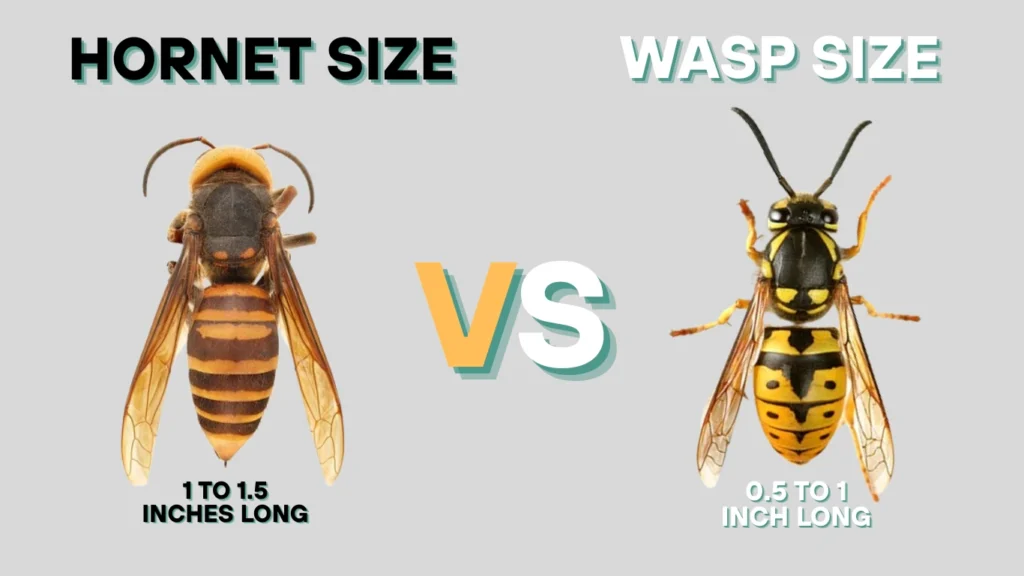
Hornets and wasps may look similar at a glance, but their size and body shape can help you tell them apart. Hornets are generally larger, more robust, and more intimidating in appearance.
General Size Comparison
Hornets are the largest members of the wasp family. Most hornets range from 1 to 1.5 inches long, with some species like the Asian giant hornet growing up to 2 inches. They have thick bodies, broad heads, and powerful jaws.
Wasps, on the other hand, tend to be smaller and more slender. Common species like yellowjackets and paper wasps are usually 0.5 to 1 inch long. They have a narrow waist and longer legs that often dangle in flight.
Regional Size Variations
In the UK, hornets like the European hornet are noticeably bigger than native wasp species. Their reddish-brown color and loud buzzing make them easy to spot.
In Australia, the presence of invasive species like the Asian hornet has raised concerns because of their size and aggression. Native Australian wasps tend to be smaller and less dangerous.
Some other common comparisons include:
- European hornet vs wasp – European hornets are about twice the size of most common wasps.
- Bald-faced hornet vs wasp – Despite the name, bald-faced hornets are actually a type of wasp, but still bigger than most yellowjackets.
- Black hornet vs wasp – Black hornets (usually referring to larger dark-bodied species) are bulkier and stronger than typical wasps.
Size can make hornets look more threatening, but behavior also plays a big role in how dangerous they are.
Hornet vs Wasp: Who Would Win in a Fight?
When it comes to a direct battle, hornets usually have the upper hand. Their larger size, stronger bite, and more powerful sting make them dominant over most wasp species in one-on-one fights.
Natural Behavior
Hornets are more aggressive when defending their territory. They don’t just sting—they also bite using their strong mandibles. Hornets will chase intruders away from their nest and can sting multiple times with serious impact.
Wasps, depending on the species, are also aggressive, especially yellowjackets. However, they’re generally more reactive than offensive. In a fight, most wasps rely on fast movement and quick stings, but they lack the brute strength hornets possess.
Real-World Encounters
In observed confrontations, hornets have been seen attacking and killing wasps, especially when competing for food or defending their nests. For example:
- Asian giant hornets have been known to invade wasp nests and kill entire colonies.
- European hornets can overpower yellowjackets with their size and venom.
So, in most head-to-head situations, the hornet wins due to its physical advantage and aggressive tactics.
Country-Specific Comparisons:
The hornet vs wasp situation can vary by region, especially when considering species behavior, invasiveness, and human encounters. Here’s how they compare in the UK and Australia.
Hornet vs Wasp in the UK
In the UK, the most well-known hornet is the European hornet (Vespa crabro). It’s larger and more intimidating than native wasps, but generally less aggressive unless provoked. Common UK wasps include the common wasp (Vespula vulgaris) and German wasp (Vespula germanica), which are more likely to be aggressive around food or when their nest is threatened.
Key differences:
- European hornets prefer wooded areas and are more active at dusk.
- UK wasps are more likely to interact with humans during the day and around sugary foods.
Hornet vs Wasp in Australia
Australia is home to several wasp species, including native paper wasps and introduced pests like European wasps (Vespula germanica). While true hornets are not native to Australia, the country is at risk from invasive species like the Asian hornet, which has caused concern due to its impact on bee populations and aggressive nature.
Key notes:
- Australian paper wasps are territorial but less aggressive than European wasps.
- European wasps in Australia are highly aggressive and often mistaken for hornets due to their size and behavior.
- If Asian hornets were to establish in Australia, they would pose a serious ecological and safety threat.
